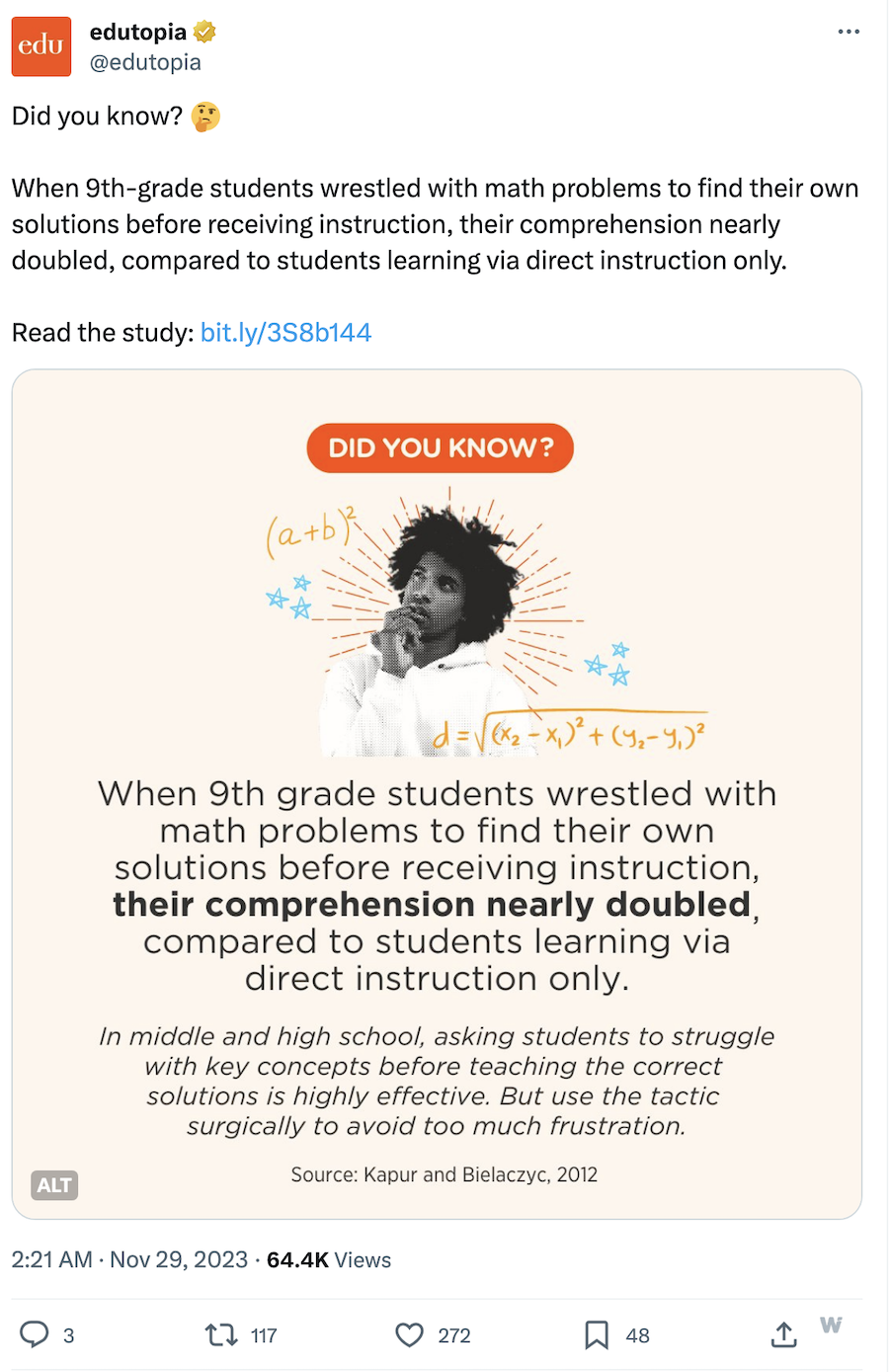Students were randomly assigned to experience 1 of 2 conditions:
- Productive Failure (PF), in which students collaboratively solved complex problems without any instructional support or scaffolds; or
- Direct Instruction (DI), in which the teacher provided strong instructional support, scaffolding, and feedback.
Findings showed that although PF students generated pictorial representations and methods for solving the problems, they were ultimately unsuccessful in their problem-solving efforts. Yet despite seemingly failing in their initial problem-solving efforts, PF students significantly outperformed DI students on the posttest.
PF students also demonstrated greater representation flexibility in solving problems involving graphical representations, a representation that was not targeted during instruction.
The 2nd and 3rd studies, conducted in schools with students of significantly lower mathematical ability, largely replicated the findings of the 1st study.
More recently, additional studies suggest the benefits of PF over DI extends to students at the elementary grades as well.
So how do you design your math lessons to take advantage of this new evidence?
Here are some discrete steps for you to try:
- Introduce the story problem to students
- Students work independently on the problem at their desks.
- Students may use manipulatives, pictures, and/or number sentences to represent the problem.
- While students are working, teacher “teaches between the seats” to support students as needed
- (REMEMBER: it is not important for every student to be successful with this problem.)
- Select two or three students to share their thinking.
- Strategically sequence the order in which the two or three students will share.
- Arrange the student solution methods from left to right on the whiteboard.
- Allow the class some time to compare and contrast between the various solution methods
- The teacher now teaches a mini-lesson to show students what they will try to do in the NEXT problem.
- Connect the student-generated solution methods to the lesson objective
- Be explicit about what you want students to try on the next problem.
- Introduce Problem #2 for students to work on.
- This cycle continues for Problem #2 and possibly Problem #3 (if needed):
Introduce problem → Students work independently → Students share → Teach mini-lesson
- This cycle continues for Problem #2 and possibly Problem #3 (if needed):
Do you want to learn more about how can you teach YOUR students through Productive Failure? You can read more about it here and here and here and here.
Contact us if you want to learn more!
.
.
.

